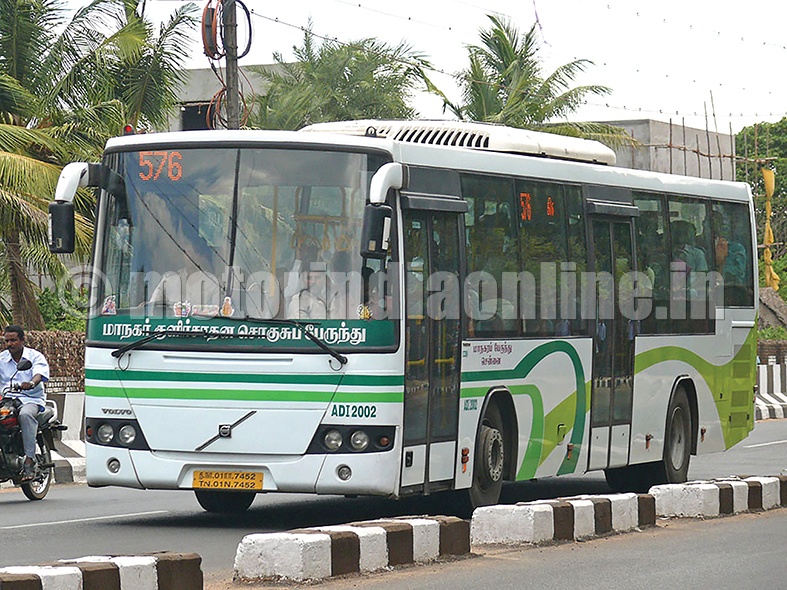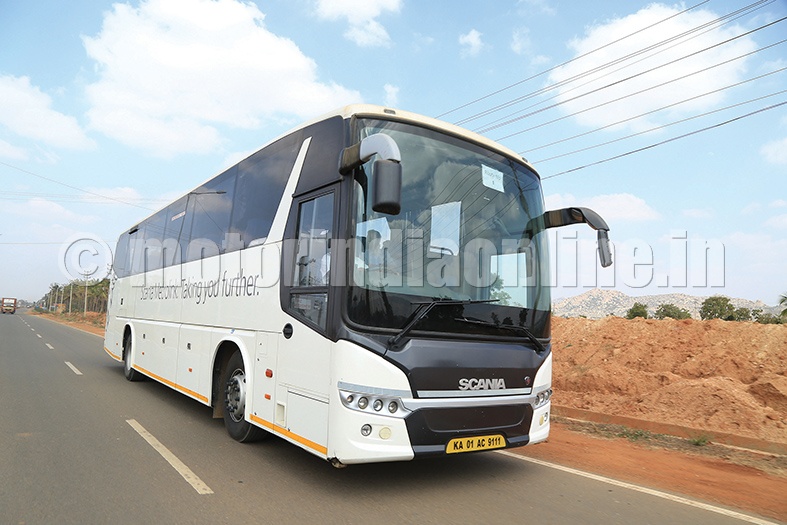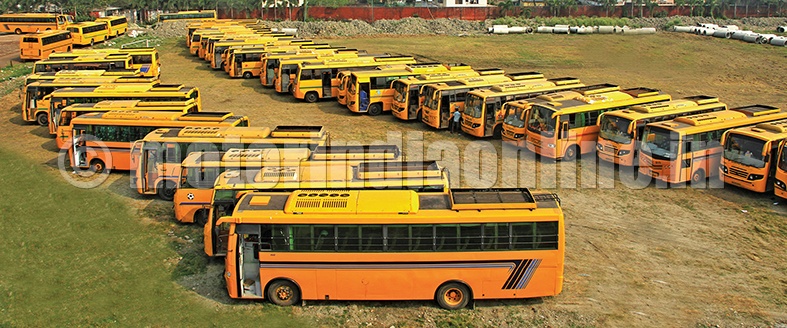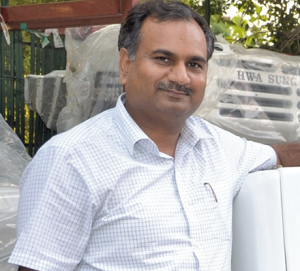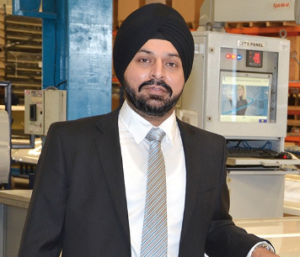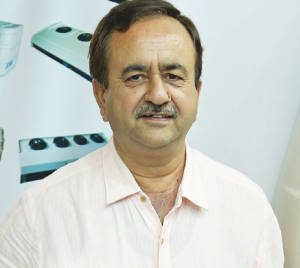Indian climatic conditions typically range from -2°C to 40°C, but can reach 47°C (117°F) in summer and -4°C in winter. With a majority of Indian cities having an average temperature of 35°C to 40°C, air-conditioning has almost become a necessity in the country. There was a time when air-conditioning was a high-end feature in passenger cars. It was always an option in entry level cars, and now, barring a very few exceptions like Maruti Omni, most of the entry level cars come with air-conditioning.
Similarly, in public transportation, until a few years back, there was hardly any air-conditioning in buses, limiting it to high-end tourist buses and caravans. But now a significant portion of new age buses come with this facility. It is evident that the conversion from non-AC to AC will happen much faster in buses than in passenger cars.
Air-conditioned buses are now in all applications like Type 1 – city buses, Type 3 – inter-city buses, Type 4 – institutions and other applications. The only exception, or rather the only less penetration is in Type 2 – inter-urban or stage carriage segment. Though there could be many reasons such as lower ticket fares, the segment is still evolving. With around 5,000 MDV buses from the TIV being air-conditioned, which is less than 10 per cent of the country’s bus market, there is enough head room which could lead to explosive growth in the bus AC segment in the near future.
Coupled with the exponential growth expected in the bus TIV in the coming years, the CAGR growth in the bus AC market could turn out to be 20-25 per cent. Looking at the way the Indian bus AC market is evolving, it is highly likely that the present market will double in the next few years.
Also not to forget about the government focusing on quality public transportation by floating large-scale projects to buy AC buses. In fact, the AC requirements are getting more and more organized with the Urban Bus Specification II (UBS II) as they call for specific temperature drop with related climatic conditions within stipulated time. Earlier there was nothing of this kind, and manufacturers (both bus and AC) had their own set of standards.
Let’s take a look at the various segments and how air-conditioning is evolving in each of them.
Type I – City buses
City buses are the nerve centre of public transportation in many Indian cities. AC buses didn’t evolve much in the past as most of the State Transport Undertakings have subsidized tickets. Due to this, high-end buses were not being used, rather not promoted in a big way. Subsequently global manufacturers entered the Indian market, making huge noise about the high-end buses and started promoting them in a big way in the country.
Cities like Bangalore were the first to test the waters of large scale AC bus fleets, tasting considerable success too. This led them to invest continuously in AC buses which received fairly good response from passengers.
Then came the Commonwealth Games 2010 in Delhi. Owing to large-scale high profile tourist visits, there was a large push for high quality AC buses. The Government, sensitized about this, invested in a large fleet of AC buses. Running parallely was India’s large-scale transport evolution by the name JnNurm, which changed the face of the country’s public road transportation. Many Tier I and Tier II cities benefited out of this and many cities got their first AC buses under the scheme.
Continuing the legacy, JnNurm II was floated, moving the quality of Indian public bus transportation to the next level, almost a fast forward of 10 years. Now, more cities with a population of over a million, are eligible for premium AC buses. Moving forward, we could see considerable proportion of city buses being air-conditioned.
Type II – Inter-urban or stage carriage buses
This is a segment connecting cities with a distance of around 150 km to 200 km and is one in which the evolution of air-conditioning is yet to happen. This is currently in the same scenario as city buses were before the introduction of the JNnurm scheme. There are very few States which have invested and looked beyond regular buses in this segment, and this is largely due to subsidized ticket fares. This could be the way forward for AC buses in the stage carriage space, but some States like Punjab have given permits to operate stage carriage buses for distances of as low as 100 km. We could see some change when the next wave of large-scale funding for inter-urban buses happens or when the PPP model is allowed in this segment as in the case of city buses.
Type III – Inter-city buses
Connecting cities with a distance of over 200 km, this segment has seen a considerable share of AC buses. Thanks to longer distances, cities are getting connected with premium buses, including sleeper buses in large numbers. This segment is currently a key driver in the AC bus market considering its size in the TIV. With growth in this segment likely to continue and AC buses becoming the norm of the day, we could see a greater share of AC buses in this space. One main reason for this is the increase in daytime travel unlike in the past where this segment had mostly overnight journeys. The other one is the increase in the distance covered by these buses.
Visionary private fleet operators who connect the length and breadth of the country with their buses are driving growth in this segment. And, with easy availability of permits and funds, many large-scale fleet owners are moving to ultra-long distance routes where they would obviously ply only AC buses. Also, the routes connecting Tier-II and Tier-III cities are getting more AC buses due to the relatively cheaper fares which are, in turn, due to the adequately-powered low-cost front engine bus chassis.
Type IV – Institutional, staff and tourist buses
Educational and institutional buses were having a good share of used buses and were mostly non-AC until a few years ago. Due to the low running mileage, operation only for around 250 days a year and travel time of around 30 to 45 mins, there wasn’t too much need for new and AC buses in this space. But now, with schools and colleges moving out of the city and an exponential rise in the number of new schools, transportation is becoming a key differentiating factor among institutions, and the demand for high-end AC school buses is growing rapidly. Many institutions are investing in air-conditioned buses, and bus manufacturers are bringing out exciting new products with various options. This segment is currently growing at a steady pace with AC makers introducing new products in the 20 kW range to suit ICV buses and compliment the growth trigger.
While the situation is similar in the staff transportation segment, tourist buses are also moving towards air-conditioning for similar reasons. With growth in tourism across India and a rise in the number of foreign visitors, the segment will largely shift towards air-conditioned buses in future.
Tarmac coach is a niche segment with a small volume catering to the needs of the Indian aviation industry. Due to new regulations and requirements in airports, the segment is now with almost 100 per cent AC buses.
Technology shift
Technology in bus air-conditioning has come a long way. A decade ago, AC in buses were largely powered by auxiliary engines rather than being driven by the primary engine, as the vehicle’s engine power was less than 150 hp. Due to this, a slave or auxiliary engine called power pack was predominantly used. With current generation buses exceeding the minimum power rating along with higher torque, the vehicle’s engine drives the AC unit. With increasing AC cooling requirements, the erstwhile common rear mount AC units are being replaced by roof-mounted units, especially in large buses.
Lighter the better being the norm of the day, aluminium refrigeration components are largely used to ensure the units are light in weight. With the units being modular in design, they are smaller in size and are thus more compact too. There are a lot more significant technological developments like shift from conventional heat exchangers to flat-tube heat exchanger technology or Micro Channel Heat Exchangers (MCHX).
There has been a radical shift in the usage of MCHX which has several advantages, giving the system a giant leap forward in terms of technology. The reduced size and weight of MCHXs can result in a smaller and lighter system, for example, reducing the size of the roof unit. In addition, lower airside pressure drop may decrease the required blower capacity and hence bring down component costs and related energy loss.
MCHXs offer other benefits, including increased latent capacity for micro-channel evaporators. Their aluminum construction also improves heat exchanger corrosion resistance. The development of MCHX leak repair techniques using epoxy rather than brazing suggests that MCHXs could be easier to repair than their conventional counterparts. The most significant advantage is the lower internal volume of an MCHX which reduces the required refrigerant charge considerably. Also, when the capacity of the AC unit increases, the heat exchanger size need not increase relatively when MCHXs are used as they have a repeatable design.
Also, the condenser and evaporator fans predominantly had conventional motors termed brushed motors. Now, brushless motors are becoming more popular due to their inherent design advantages. Other than being relatively cheaper and with simplified wiring, brushless motors do not have brushes to check or change, thereby reducing the maintenance time for improved operational efficiency.
Brushless motors also offer programmable variable speed which allows for power optimization and conservation and reduces load on the engine. This solution features a significant noise reduction in the condenser to increase driver and passenger comfort and meet external noise requirements.
In the updated brushless motor package, the condenser motor, fan and shroud are now a single assembly and require no adjustments, making maintenance and replacement easier and less expensive. As said earlier, both the condenser and evaporator motors feature an electronic package that is integral to the motor itself, eliminating the external controllers, wiring harnesses, terminals and studs that were required earlier.
With the advent of AC buses, there are a row of global AC manufacturers already establishing presence in India. Unlike passenger cars, AC in buses is largely driven by customer requirements which, in turn, depends on the service network of the individual AC manufacturers. Some manufacturers have joint service with bus builders, while others have their own service centres.
In order to stay afloat, every AC manufacturer is investing in technology to help drive the market. New technologies have improved the overall reliability, durability and compactness of AC units, thereby making air-conditioned buses the preferred choice of the masses.
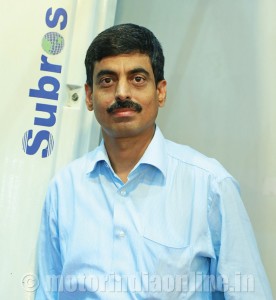 “Around 15-20 years back, only 10 to 15 per cent of passenger cars in India were air-conditioned but today the situation is totally different. Air-conditioning in buses is less than 10 per cent today and will gradually reach around 70 to 80 per cent in the coming years. With people opting for comfort during in intra- and inter-city travel, we expect the change to happen much faster in the bus segment than what we saw in passenger cars.”
“Around 15-20 years back, only 10 to 15 per cent of passenger cars in India were air-conditioned but today the situation is totally different. Air-conditioning in buses is less than 10 per cent today and will gradually reach around 70 to 80 per cent in the coming years. With people opting for comfort during in intra- and inter-city travel, we expect the change to happen much faster in the bus segment than what we saw in passenger cars.”
– Mr. Pankaj Mehra, DGM – AM, Exports & Marcom, Subros Ltd.
**************************************
“With the Indian bus market continuing to evolve, there is greater interest for AC buses, even in segments lower than premium where Volvo is present. The overall demand for AC buses will grow in the coming years. The introduction of UD Buses in the Indian market is proof that the aspirations of people to travel in greater comfort wherein AC is a predominant demand. The bus industry itself is gearing up to meet the future demand of AC buses.” – Volvo Buses India
**************************************
“The Indian bus AC market has witnessed exponential growth in the school bus and staff transport segments in the last three years and we envisage the growth to continue vigorously over the next two to three decades.”
– Mr. Shatrughan Kumar, Managing Director, Jingyi Trans Climate Control System India (P) Ltd.
**************************************
“Air-conditioning in the school and staff bus segments have grown a lot over the last two years and we expect this to continue. We have new vehicle platforms introduced in this space by couple of OEMs and such developments will add up to the demand. We expect the penetration in the overall bus AC market to double in the next few years from the current level of 7-8 per cent.”
– Mr. K.P. Singh, Director, Eberspaecher Suetrak India
**************************************
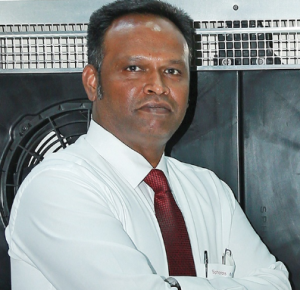 “Low cost ACs can be a game-changer in minimizing the cost difference between AC and non-AC buses. This is the voice of the country’s bus customer to revolutionize and enhance the bus AC market in India.”
“Low cost ACs can be a game-changer in minimizing the cost difference between AC and non-AC buses. This is the voice of the country’s bus customer to revolutionize and enhance the bus AC market in India.”
– Mr. Cyril Xavier, Chief Operating Officer, Spheros Motherson Thermal System Ltd.
**************************************
“The Indian bus AC market has been a very potential one with plenty of avenues available for sustained growth. There has always been very good acceptance for new technologies with customers demanding hi-tech products. If the pricing factor improves then we are sure that the segment would grow more rapidly than the current pace.”
– Mr. B. S. Arora, General Manager, Business Development – India, SONGZ
**************************************
“Growing infrastructure, better roads and the need for comfortable and safe travel are driving the demand for AC buses. Air Conditioning is no longer a luxury and is becoming a necessity, mainly due to the pollution and climatic conditions in India. There is increasing demand for air-conditioning seen across segments including coaches, school buses and staff buses, while demand in the city bus market is also expected to grow with fast urbanization. The AC bus penetration which is currently at around 10 per cent is expected to grow to 13-15% in the next 5 years.”
AC buses. Air Conditioning is no longer a luxury and is becoming a necessity, mainly due to the pollution and climatic conditions in India. There is increasing demand for air-conditioning seen across segments including coaches, school buses and staff buses, while demand in the city bus market is also expected to grow with fast urbanization. The AC bus penetration which is currently at around 10 per cent is expected to grow to 13-15% in the next 5 years.”
– Mr. Sudarshan Ananth, Territory VP and Business Head – HVAC & Transport, Ingersoll Rand (Thermo King)
